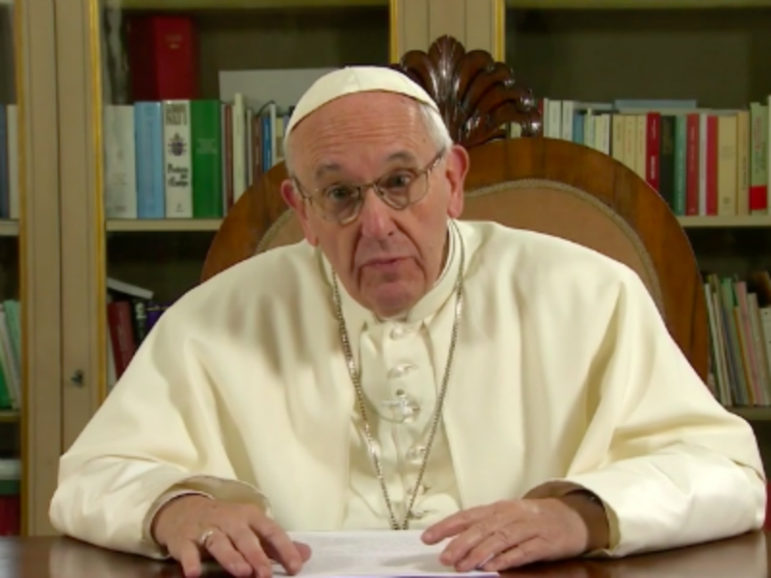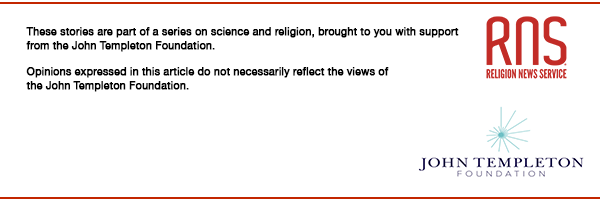(RNS) Pope Francis embraced a future in which science benefits everyone in a surprise video address from the Vatican to the 2017 TED Conference being held in Vancouver, British Columbia.
His virtual appearance at the conference makes Francis the first pope to give a TED Talk, and it highlights again his willingness to reach out beyond the Vatican walls and to engage with science and technology.
In his address, titled “Why the Only Future Worth Building Includes Everyone” and delivered Tuesday (April 25) to the tech-minded crowd, Francis said in Italian that he was “thrilled” to join the conference, called “The Future You.”
“The future is, most of all, in the hands of those people who recognize the other as a ‘you’ and themselves as part of an ‘us.’ We all need each other,” he said.
[ad number=”1″]
TED, which stands for Technology, Entertainment and Design, is a media organization that posts brief, often viral talks online that focus on big ideas — many presented by well-known figures.
Often delivered as inspirational testimonies about human creativity, the talks have occasionally been criticized as being more appropriate to a megachurch than a scientific forum.
In his talk, the pope called for a “revolution of tenderness.” He said he hoped the conference would remind people not to “lock our door to the outside world.” Science “points to an understanding of reality as a place where every element connects and interacts with everything else,” he added.
Francis also said he hoped advancements in science and technology would lead to equality for all people, noting his family’s immigrant past and the “culture of waste” that he detailed in his 2015 encyclical on protecting the environment, “Laudato Si.”
[ad number=”2″]
An encyclical is one of the most authoritative documents a pope can issue, and that Francis dedicated an encyclical to global warming was considered a sign of his concern for the environment and his respect for scientific research.
Indeed, the Vatican has frequently called on outside scientific experts for advice, even if those experts diverge from the Catholic Church on flashpoint issues like birth control and abortion.
Columbia University economist Jeffrey Sachs, former director of the Earth Institute, is a regular presence at the Vatican, and the Vatican called on Naomi Klein, a Canadian climate change activist who describes herself as a “secular Jewish feminist,” to help promote the pontiff’s environmental encyclical.
In the document, Francis — who studied chemistry as a college student — notably does not get bogged down in debates about climate change, but instead accepts it as a reality supported by “the best scientific research available today.”
He then uses the science as “a concrete foundation for the ethical and spiritual itinerary that follows.”
[ad number=”3″]
The interplay of science and technology with ethics and spirituality is always at the heart of Francis’ reflections; he has lauded advances in digital technology even as he describes himself as a “dinosaur” when it comes to computers and the internet.
At the same time, he repeatedly warns against people becoming consumed by “screen time” and failing to relate to others and to the world around them.
A case in point: Earlier this month, Francis addressed Italy’s National Committee for Biosafety, Biotechnology and Life Sciences at an audience in the Vatican, reminding his audience that science and technology were made for the world and not the other way around.
Francis has also embraced technology to advance the church’s mission, conducting Google Hangouts and maintaining an active presence on Twitter (an account he inherited from his predecessor, Pope Emeritus Benedict XVI) and Instagram. And he shares his monthly prayer intentions in videos on the Vatican’s YouTube channel.
(RNS National Reporter David Gibson contributed to this report)







